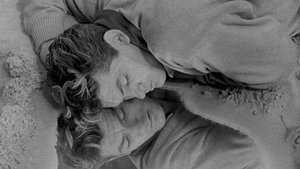Contact: [email protected]
Video Sources 0 Views

Synopsis
[ez-toc]




Introduction
In the enchanting realm of old films, where black and white images often dominate the cinematic landscape, a groundbreaking transformation has taken place with the advent of colorization. One such masterpiece that has undergone this vivid metamorphosis is “Orpheus Colorized 1950.” This film not only captivates audiences with its timeless narrative but also stands as a testament to the significance of colorization in preserving and revitalizing classic cinema.
Read Media File Transfer Agreement: Terms and Conditions
Read FAQ
The History and Technique of Film Colorization
The Evolution of Old Movies
Old films, with their nostalgic charm and historical significance, hold a special place in the hearts of cinephiles worldwide. These cinematic treasures provide a glimpse into bygone eras, capturing the essence of storytelling through a monochromatic lens. However, as technology advanced, the need to breathe new life into these classics became apparent. The technique of colorization emerged as a means to bridge the gap between the past and the present.
Overview of the Significance of Old Movies
Old movies serve as cultural artifacts, preserving the artistic vision and societal nuances of their respective eras. They are windows into the collective consciousness of bygone times, offering valuable insights into the evolution of cinema and society. The preservation and restoration of these films become paramount to ensure that future generations can appreciate and learn from the rich tapestry of cinematic history.
Explanation of the Colorization Process
Colorization is a meticulous process that involves adding color to monochromatic films. This delicate art form requires a deep understanding of the original film’s aesthetic and historical context. The goal is not to erase the essence of the black and white era but to enhance the visual experience for contemporary audiences. Through advanced technology, colorization has become a powerful tool in the hands of restoration experts, allowing them to breathe new life into old classics.
Importance of Preserving and Restoring Old Films
Preserving and restoring old films is a responsibility that extends beyond mere nostalgia. These cinematic gems contribute to our cultural heritage, offering a unique perspective on the art of storytelling and the evolution of filmmaking. Film enthusiasts, historians, and critics play a crucial role in advocating for the preservation of these treasures, ensuring that the magic of old movies continues to inspire and resonate with audiences.
Role of Film Reviewers and Critics
Film reviewers and critics play a pivotal role in analyzing and interpreting old films. Their insights contribute to a deeper understanding of the historical, cultural, and artistic elements embedded in these cinematic classics. As guardians of cinematic heritage, their assessments help guide audiences to appreciate the nuances of storytelling that transcend temporal boundaries.
Examining “Orpheus Colorized 1950” Through the Lens of Colorization
Background of “Orpheus Colorized 1950”
“Orpheus Colorized 1950” is a mesmerizing French film that transcends the limitations of its original black and white format. Directed by the visionary Jean Cocteau, the film is a colorized adaptation of his 1950 classic “Orpheus.” Set against the backdrop of post-war France, the film weaves a surreal narrative inspired by the Greek myth of Orpheus and Eurydice.
Synopsis of the Film
The narrative follows Orpheus, a poet portrayed by the charismatic Jean Marais, who becomes entangled in a world of mythology, love, and the supernatural. The film explores the boundaries between life and death as Orpheus descends into the underworld to rescue his beloved Eurydice. Georges Auric’s evocative musical score and Cocteau’s artistic prowess create a cinematic masterpiece that transcends conventional storytelling.
Biographical Information about Jean Cocteau
To truly appreciate “Orpheus Colorized 1950,” it’s essential to delve into the life and artistic vision of Jean Cocteau. A multifaceted artist, Cocteau was a poet, novelist, playwright, and filmmaker, known for his contributions to the Surrealist movement. His avant-garde approach to storytelling and aesthetics laid the foundation for “Orpheus,” making him a pioneer in the exploration of the cinematic medium.
Exploration of Greek Mythological Elements
The film draws inspiration from the Greek myth of Orpheus and Eurydice, infusing classical elements into a post-war French setting. Cocteau’s reinterpretation of the myth adds layers of complexity, blending the timeless narrative with contemporary issues. The exploration of love, loss, and the journey between life and death resonates with audiences on a profound level, transcending cultural and temporal boundaries.
Analysis of Visual Aesthetics and Artistic Choices
Colorization, when applied judiciously, enhances the visual aesthetics of a film, breathing new life into its frames. In “Orpheus Colorized 1950,” the infusion of color accentuates Cocteau’s dreamlike sequences, creating a visual feast for the audience. The juxtaposition of vibrant hues against the film’s surreal narrative adds depth and resonance, elevating it to a cinematic experience that transcends the traditional black and white medium.
The Impact and Controversy Surrounding “Orpheus Colorized 1950”
The Impact of Colorization on Audience Perception
Colorization has the power to transform the audience’s perception of a film, offering a fresh perspective on a classic narrative. In the case of “Orpheus Colorized 1950,” the infusion of color amplifies the emotional depth of the characters and the otherworldly landscapes. This impact resonates with both seasoned fans of the original and newcomers, creating an immersive experience that transcends generational gaps.
Enduring Appeal and Relevance of Old Movies
The enduring appeal of old movies lies in their ability to communicate universal themes and emotions. “Orpheus Colorized 1950” continues to captivate audiences, bridging the gap between past and present. The film’s relevance persists, not just as a relic of the 1950s but as a timeless exploration of love, art, and the human condition.
Enhancement of Surrealistic Elements
Cocteau’s original vision for “Orpheus” was steeped in Surrealism, and the colorization process amplifies these surrealistic elements. The dreamlike sequences, mystical landscapes, and symbolic imagery come to life in a vivid and striking manner. This enhancement deepens the film’s impact, inviting audiences to immerse themselves in the fantastical world Cocteau envisioned.
Controversies Over Colorization
While colorization has breathed new life into old classics, it has not been without its share of controversies. Purists argue that altering the original black and white aesthetic compromises the integrity of the filmmaker’s vision. “Orpheus Colorized 1950” has not escaped these debates, with some embracing the vibrant hues while others insist on preserving the film in its original monochromatic form. The controversy surrounding colorization raises essential questions about the delicate balance between restoration and artistic preservation.
Preserving Cultural Heritage: French Cinema in the 1950s
Overview of French Cinema during the 1950s
To fully appreciate the context of “Orpheus Colorized 1950,” it is crucial to explore the landscape of French cinema in the 1950s. This period marked a renaissance in French filmmaking, with directors like Cocteau pushing the boundaries of storytelling and aesthetics. The aftermath of World War II infused French cinema with a unique blend of introspection and creativity, setting the stage for iconic works like “Orpheus.”
Influence of Key Figures
Jean Marais and Georges Auric, integral figures in “Orpheus Colorized 1950,” played significant roles in shaping the cinematic landscape of the 1950s. Marais, known for his collaboration with Cocteau, brought Orpheus to life with his magnetic performance. Auric’s musical composition added another layer of emotional depth to the film, solidifying its place in the annals of French cinematic history.
Cultural and Historical Context
The post-war era in France witnessed a cultural renaissance, with artists, intellectuals, and filmmakers seeking to redefine their identity in the aftermath of conflict. “Orpheus Colorized 1950” encapsulates this period, using mythology as a lens to explore the complexities of human experience against the backdrop of a recovering nation.
Interpreting Mythology on the Big Screen
Examination of Greek Mythology in Film
The portrayal of Greek mythology in film has been a recurring theme, with filmmakers often drawing inspiration from ancient narratives to craft timeless stories. “Orpheus Colorized 1950” joins this tradition, offering a unique perspective on the myth of Orpheus and Eurydice. The blending of classical mythology with post-war French sensibilities creates a narrative that transcends its origins.
Analysis of Myth Interpretation
Cocteau’s interpretation of the Orpheus myth goes beyond a mere retelling. The film becomes a poetic exploration of the human condition, love, and the eternal quest for meaning. The underworld, a central element in the myth, takes on new dimensions in “Orpheus Colorized 1950,” becoming a metaphor for the shadows that linger in the aftermath of war and personal tragedy.
Depiction of the Underworld
The colorization process amplifies the atmospheric qualities of the underworld in the film. The interplay of light and shadow, combined with the infusion of color, transforms the underworld into a visually stunning landscape. Cocteau’s artistic choices in depicting this realm add layers of symbolism, inviting audiences to reflect on the profound themes embedded in the myth.
The Legacy Continues: Appreciating “Orpheus Colorized 1950” Today
Critical Reception and Awards
“Orpheus Colorized 1950” received acclaim upon its colorized release, with critics praising the film for its visual brilliance and reinterpretation of Cocteau’s original vision. The film’s recognition extends beyond its initial release, with awards and retrospectives celebrating its enduring legacy. The fusion of classic storytelling with modern technology has allowed “Orpheus Colorized 1950” to carve a niche in the pantheon of cinematic masterpieces.
Recommendations for Viewing
For those eager to embark on a journey into the mesmerizing world of “Orpheus Colorized 1950,” there are ample opportunities to experience this cinematic gem. Online platforms and curated film collections offer viewers the chance to witness the film’s colorized splendor. It is a recommendation not just for cinephiles but for anyone seeking to explore the intersection of classical mythology and avant-garde filmmaking.
Lasting Influence and Legacy
The legacy of “Orpheus Colorized 1950” extends beyond its artistic achievements. The film stands as a testament to the power of colorization in preserving and revitalizing classic cinema. Its enduring influence is evident in the continued discourse surrounding the intersection of old movies and modern technology. As audiences revisit this timeless tale, they contribute to the ongoing dialogue about the preservation and evolution of cinematic heritage.
Embracing the Past, Transforming the Future
Final Thoughts on “Orpheus Colorized 1950”
In conclusion, “Orpheus Colorized 1950” emerges as a cinematic triumph, marrying the timeless allure of old films with the transformative capabilities of colorization. Jean Cocteau’s visionary approach to storytelling, coupled with the impactful performances of Jean Marais and the evocative score by Georges Auric, cements the film’s place in the annals of cinematic history.
As we embrace the past, we must also acknowledge the role of technology in transforming the future of cinema. “Orpheus Colorized 1950” serves as a beacon, guiding us through the delicate balance between preservation and innovation. In the kaleidoscope of cinematic beauty, this film stands as a testament to the enduring power of storytelling and the ability of colorization to breathe new life into the classics we hold dear. As we traverse the landscapes of myth and memory, “Orpheus Colorized 1950” invites us to contemplate the infinite possibilities that lie at the intersection of old films and the ever-evolving tapestry of cinema.












